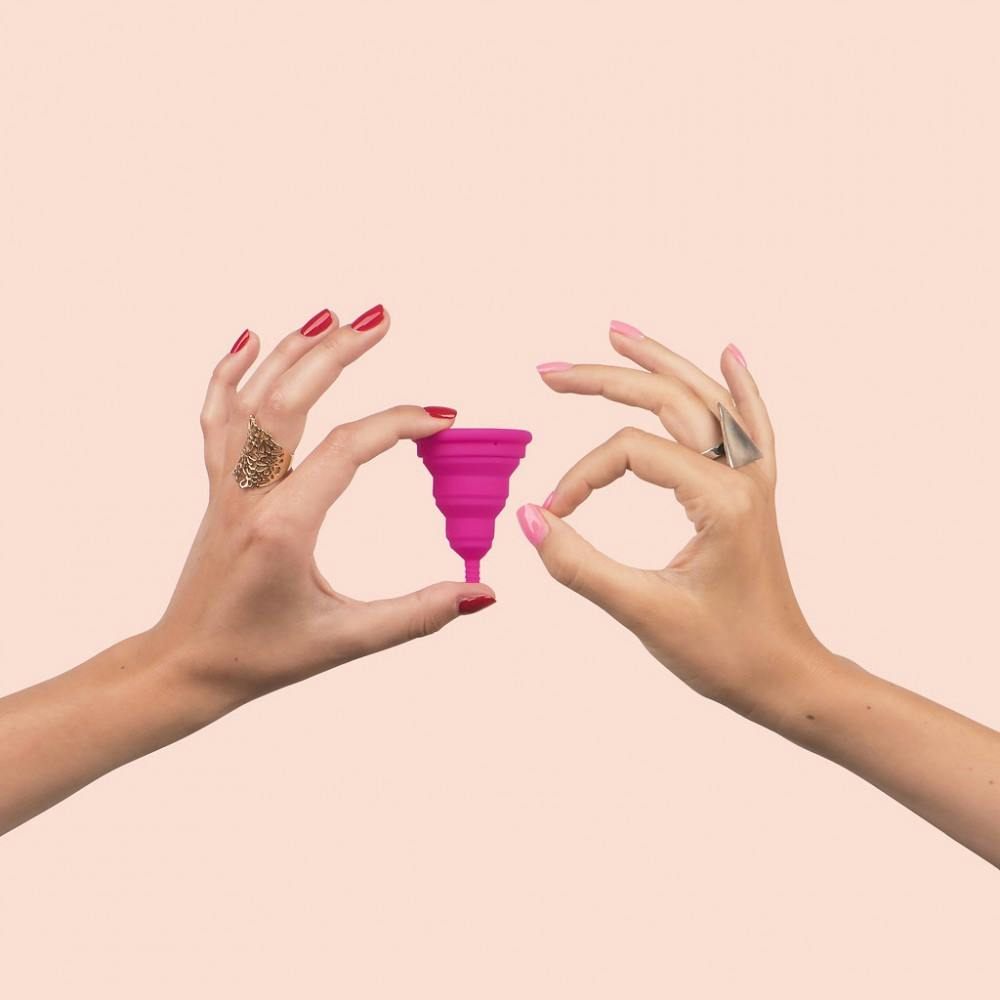The first time I heard the words “menstrual cup”, I’m pretty sure I gagged. At the time, the cup seemed so foreign, so unnecessary, and—to be frank—so gross. For some reason, I pictured the minuscule white cups used for ketchup at fast–food restaurants. However, underneath all my external disgust was an innate curiosity as to why so many people swear by using a menstrual cup.
Preparing for my next Street article—and knowing my period was coming—I decided to use this as an opportunity to try one without any potential judgment from my friends. I thought to myself, “What’s the worst thing that can happen. I'll take it out and go back to the pads and tampons I used to use."
Despite my internal excitement to uncover the mystery that was menstrual cups, I was still terrified of the stigma precluding their use. I had to ask my friend to pick one up for me from the Ware office, claiming “I did not know how to get there.”
When she handed it to me while laughing at my discomfort, I was taken aback. The material did not mimic that of a ketchup cup from McDonalds, but rather was made of a soft silicon material. Included in the kit was the cup itself, a cleaning brush, instructions, and a miniature pouch to hold it all. The entire process went from complicated and ugly in my mind to simple and convenient in real life.
Walking to the bathroom to insert the cup, I was nervous. I double checked to make sure no one entered the bathroom, choosing the furthest stall just in case. I quickly inserted the cup, rushing to get the entire awkward process over with. I felt an intense pressure that quickly turned to intense pain. I ripped the cup out proclaiming an internal “I told you so." I put the tampon I had brought with me and went about my day. Talking to Meghan Moran (E’ 22) about the process after, she told me that this feeling was almost normal and that “it took [her] two cycles to get the hang of it...if done right, it shouldn’t hurt at all.”
Still, I was unsure. I decided I would try again the next day, but now with my mental block partnered an anxiety of the potential pain I would feel. It took me until the end of the cycle to have the courage to try again. This time everything went relatively seamlessly. It was in this moment I remembered the first time I had put in a tampon, and the equivalent pain I had felt. I realized that with perseverance I had grown accustomed to tampons, but the stigma surrounding menstrual cups encouraged me to write them off.
Later in the week, I talked to two upperclassmen, Caroline Raquel (E’ 20) and Lauren McLeod (E’ 20) who had extensive background in menstrual cups after having performed research on it for their BE370 course. The class centered around developing biomedical device prototypes. Since Caroline and Lauren had a strong passion for women’s health and realized there was lack of current research surrounding menstrual cups, the two partnered with Chris Hahn, a Penn Medical student, to create a menstrual cup better suited for the female anatomy. Their research has helped shed light on a multitude of benefits and incorrect stereotypes surrounding menstrual cups.
Some cite financial reasons as an excuse.“People say that it is not the same as just buying a cheaper box of tampons. Individuals are worried about what happens when the cup doesn’t fit and they need to buy a new one,” they told me. However, for most people, the first cup they try actually fits. It works for people who have given vaginal birth and who haven’t. Inserting the cup is truly just a learning curve.
The cup can range around $25–$50, however individuals “spend around $200–$300 on hygienic care products per year as compared to the $30 on a menstrual cup that can be used up to 4 years.” Beyond this, the biodegradable nature of the cup makes it more sustainable as compared to the production process of pads and tampons.
People have also raised concerns about the capacity of the cup and are worried about leakage. According to the two, although “heavy flow can sometimes result in exceeding the volume capacity, it is pretty rare. The menstrual cups can hold an equivalent amount of blood as 5 tampons.”
Oftentimes with pads and tampons, many people worry about a potential smell emanating from their lower region. “The menstrual cup, however, has no smell associated as compared to that of a tampon or pad.”
Also, "With tampons and other products on the market, people don’t always know everything about their production process and the materials that go into it. Menstrual cups are made out of medical grade silicon which suits human biology much better. The material is highly hydrophobic making it easier to clean out as well.”
When I first used the menstrual cup—and when I first began to write this article—I didn’t know whether I was going to continue to use it. I had struggled to get past the societal stigma of the whole process. Through time, I have learned that society is too quick to judge when it comes to biology, especially women’s menstrual cycles. As girls, we accept the stigma and societal pressures when we whisper about needing a tampon or silently endure the pain of our cycles, let alone embracing the menstrual cup. I have learned that just because something is different does not mean it’s gross, and something unknown can also be revolutionary.

